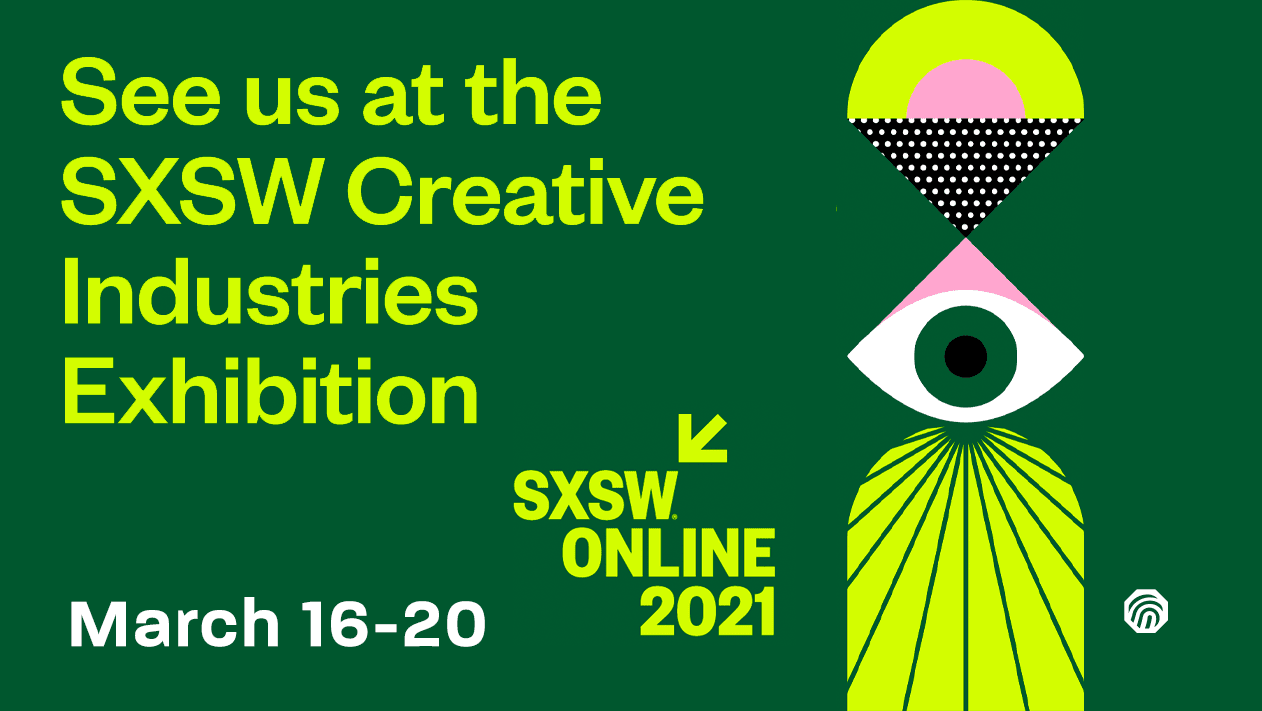Do you consider yourself a creative visionary? We do. Here’s a fantastic opportunity to link up and learn from others like us.
South By Southwest dedicates itself to helping creative people achieve their goals. This year they are going digital, and the ThumbStopper team will be in attendance showing off the innovative technology that is connecting brands and retailers from around the world on social media.
SXSW Online, March 16-20
South By Southwest dedicates itself to helping creative people achieve their goals. This year they are going digital; Industry leaders, storytellers, and visionaries will have the opportunity to reimagine the future at SXSW Online.
This virtual event will feature over 230 conference sessions and a long list of visionary keynotes. There will also be a Creative Industries Exhibition, networking, professional development opportunities, and the unexpected discoveries that are always a part of SXSW, all in a digital setting.
7 Themes for 2021
A NEW URGENCY
2020 has amplified issues like racial injustice, poverty, nationalism, and the climate crisis amidst a global pandemic. The future depends on the business, non-profit, government, science, and technology communities all working together. What advancements are needed to create immediate and lasting progress?
CHALLENGING TECH’S PATH FORWARD
If we are to achieve real change as a society, then the many ways in which the tech industry impacts our lives must be leveraged as a positive force. To build a better tomorrow, what lessons can an industry integral to our existence learn from its current failings?
CULTURAL RESILIENCE IN THE ARTS
Great art often thrives in times of turmoil and chaos. How will the eruption of creativity we are currently seeing across music, film, experiential, written, and visual arts impact our culture for the next decade and beyond?
THE REBIRTH OF BUSINESS
From startups to small companies to major corporations, capitalism must be examined as we look to rebuild the global economy. A potential leveling of the playing field awaits if we seize this opportunity for more equitable systems across race, gender, and class.
TRANSFORMING THE ENTERTAINMENT LANDSCAPE
Conventional wisdom from entertainment industries has lost its shine in the face of evolving consumer habits, technological advancements, and an increased focus on social issues. These pressures are forcing a much needed metamorphosis. What lessons can music, film, television, sports, and gaming learn to keep up with an ever-accelerating pace of change?
CONNECTION IN DISCONNECTION
We’re living lives we never could have imagined as we head into our own brave new world. The consequences of social isolation have been brewing for years. Now online platforms are some of the only outlets available to foster a sense of community. How do we return to a world where individual concerns give way to embracing the value of humanity?
AN UNCHARTED FUTURE
Biohacking, consumer space travel, quantum physics, radical life extension, drone delivery — these concepts that once belonged in science fiction are now part of our immediate future. What mind-blowing new ideas will inspire the next generation of innovators?
Visit ThumbStopper at SXSW
ThumbStopper® turns your retailers into “micro-influencers” for brands, resulting in a significant increase in social media exposure and ultimately sales.
The ThumbStopper team is looking forward to connecting, and showing off the innovative technology that we are using to connect brands and retailers from around the world on social media. If you are also interested in connecting, please consider registering for the event at https://ts.social/SXSWRegistration. We hope to see you there.




